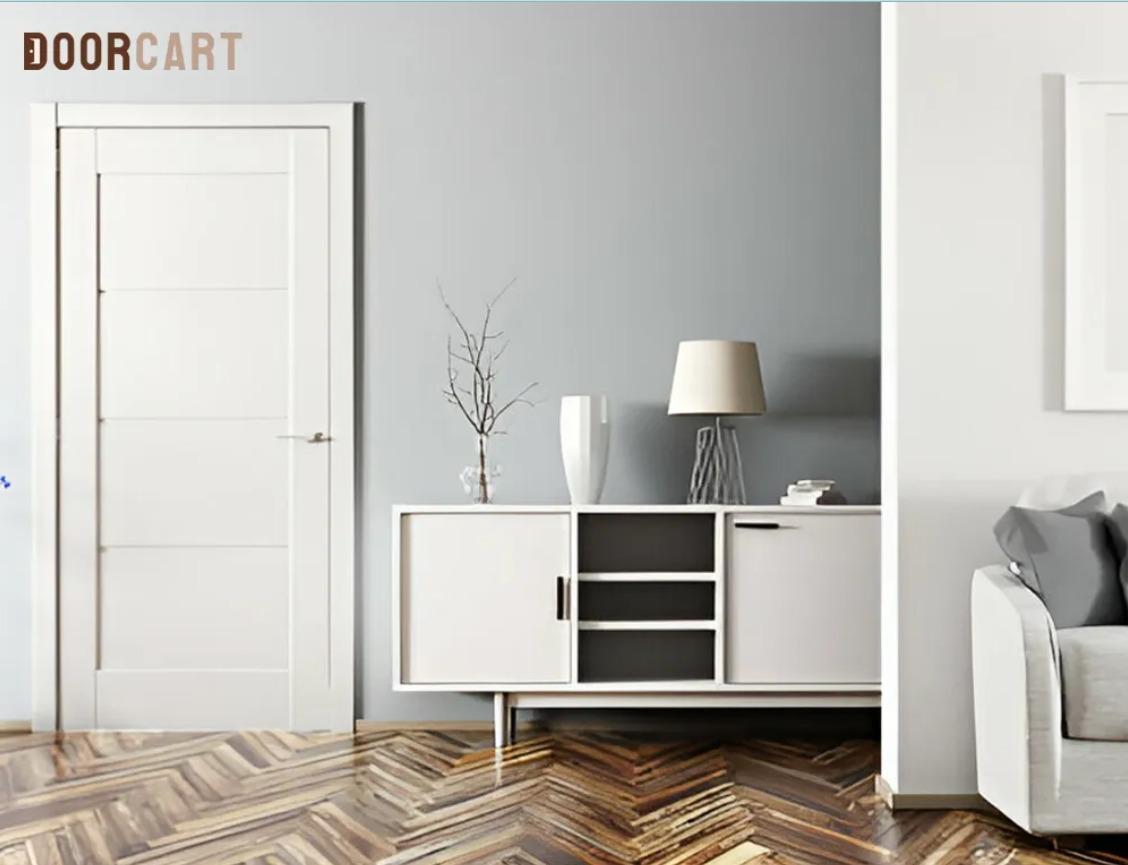Choosing the right interior door for your home involves balancing aesthetics, functionality, and budget. Two popular options are Shaker-style doors with glass and hollow core doors interior. Each has distinct advantages and drawbacks, making them suitable for different applications.
In this comprehensive guide, we’ll compare Shaker interior doors with glass and hollow core interior doors, covering:
-
What Is a Shaker Interior Door with Glass?
-
Pros and Cons of Shaker Doors with Glass
-
What Is a Hollow Core Interior Door?
-
Pros and Cons of Hollow Core Doors
-
Key Differences Between Shaker Glass Doors and Hollow Core Doors
-
Which One Should You Choose?
-
Installation and Maintenance Tips
By the end, you’ll have a clear understanding of which door type best fits your needs.
1. What Is a Shaker Interior Door with Glass?
Shaker-style doors are known for their clean lines, minimalist design, and timeless appeal. Originating from the Shaker furniture movement, these doors feature a five-piece construction with a flat center panel and square edges.
When combined with glass inserts, Shaker doors offer both functionality and elegance. The glass can be:
-
Clear (for visibility and light flow)
-
Frosted or textured (for privacy)
-
Stained or decorative (for aesthetic appeal)
Common Uses for Shaker Doors with Glass:
-
Kitchen cabinets
-
Pantry doors
-
Home offices
-
French doors
-
Room dividers
2. Pros and Cons of Shaker Doors with Glass
✅ Pros:
✔ Timeless Design – Fits modern, traditional, and transitional interiors.
✔ Natural Light Flow – Glass panels brighten up dark hallways and rooms.
✔ Customizable – Available in various wood types (oak, maple, MDF) and glass styles.
✔ Durable Construction – Typically made with solid wood or engineered wood for longevity.
❌ Cons:
✖ More Expensive – Higher cost than hollow core doors due to materials and glasswork.
✖ Less Soundproof – Glass reduces noise insulation compared to solid doors.
✖ Maintenance Required – Glass needs regular cleaning, and wood may need refinishing.
3. What Is a Hollow Core Interior Door?
Hollow core doors are lightweight, affordable interior doors made with a thin veneer over a honeycomb cardboard or foam core. They are commonly used in residential homes for:
-
Bedrooms
-
Closets
-
Bathrooms (if moisture-resistant)
-
Laundry rooms
Construction Details:
-
Frame: Solid wood or composite around the edges for stability.
-
Core: Hollow or filled with lightweight materials (not soundproof).
-
Surface: Laminate, wood veneer, or painted finish.
4. Pros and Cons of Hollow Core Doors
✅ Pros:
✔ Affordable – Much cheaper than solid wood or Shaker glass doors.
✔ Lightweight – Easy to install and handle.
✔ Variety of Finishes – Available in different colors and faux wood grains.
✔ Good for Low-Traffic Areas – Ideal for closets and spare rooms.
❌ Cons:
✖ Less Durable – Prone to dents, scratches, and warping over time.
✖ Poor Sound Insulation – Hollow interior doesn’t block noise well.
✖ Limited Customization – Fewer design options compared to solid wood doors.
✖ Not Suitable for Heavy Use – Weak hinges and structure may wear out faster.
5. Key Differences Between Shaker Glass Doors and Hollow Core Doors
| Feature | Shaker Door with Glass | Hollow Core Door |
|---|---|---|
| Material | Solid wood, MDF, or engineered wood | Veneer over hollow core |
| Weight | Heavy | Lightweight |
| Cost | Expensive | Budget-friendly |
| Durability | High | Low |
| Soundproofing | Moderate (glass reduces insulation) | Poor |
| Aesthetic Appeal | High (elegant, customizable) | Basic (limited styles) |
| Maintenance | Requires cleaning (glass) and refinishing | Low maintenance |
| Best For | High-end homes, kitchens, offices | Closets, low-traffic areas |
6. Which One Should You Choose?
Choose a Shaker Door with Glass If:
-
You want a luxurious, high-end look.
-
You need natural light flow between rooms.
-
You prefer customizable designs (glass type, wood finish).
-
You’re installing doors in high-visibility areas (living rooms, kitchens).
Choose a Hollow Core Door If:
-
You’re on a tight budget.
-
You need a lightweight, easy-to-install door.
-
The door is for a low-traffic area (closet, storage room).
-
You don’t need soundproofing or high durability.
7. Installation and Maintenance Tips
For Shaker Doors with Glass:
-
Hire a professional for precise fitting (glass is fragile).
-
Use sturdy hinges (solid wood is heavier).
-
Clean glass regularly with a streak-free cleaner.
-
Refinish wood every few years to prevent wear.
For Hollow Core Doors:
-
DIY-friendly due to lightweight construction.
-
Avoid moisture exposure (can cause warping).
-
Use soft-close hinges to prevent slamming damage.
-
Patch minor dents with wood filler and repaint.
Final Thoughts
Both Shaker interior doors with glass and hollow core doors have their place in home design. If you prioritize style, durability, and light flow, a Shaker glass door is the best choice. However, if you need an affordable, lightweight option for a closet or spare room, a hollow core door will suffice.
Before making a decision, consider:
-
Your budget
-
The room’s function
-
Aesthetic preferences
-
Long-term durability needs
By weighing these factors, you can select the perfect interior door for your space

